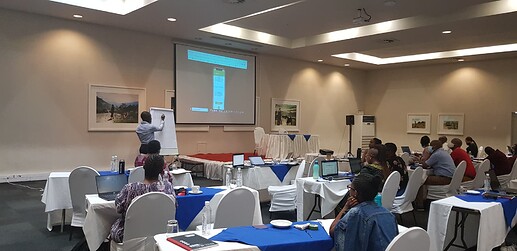Karabo ea Bophelo (KB) OVC-DREAMS Project background
Orphans, vulnerable children, adolescent girls and young women face challenges in health care provision. The Karabo ea Bophelo (KB) (which translates as ‘a solution to good health’) is a project to prevent new HIV infections and reduce vulnerability in Lesotho. The project offers services in interventions; case management services offered under the orphans and vulnerable children program whose beneficiaries are children and their caregivers as well as the HIV prevention services offered as part of DREAMS (Determined, Resilient, Empowered, AIDS-free, Mentored and Safe) targeting Adolescent girls and young women 10 to 24 years old. The project implementation and services delivery involve multiple partners; the Ministry of Social Development, PSI, Jhpiego, EGPAF and KB itself. The services are offered in community and/or health facility settings by case management workers, social workers, field agents, and health facilities biomedical providers.
Challenges that were faced before the KB OVC-DREAMS project
Service provision data has been tracked using different means; paper-based with retrospective electronic data entry and direct data entry in the field using tablets. Some partners used electronic systems for data management and visualization including JHPIEGO’s DHIS2 while other partners kept their data in Excel and Access databases. With such diversity, harmonization of beneficiaries tracking along with service provision has been cumbersome and resulted in duplication of beneficiaries, delayed data reporting, complicated data analysis and data quality issues.
The Solution - Integrated OVC DREAMS Information System
In strengthening the quality of health services tracking, the commencement of an electronic system that will translate the business process was crucial. HISP Tanzania provided technical support for the development and implementation of the OVC-DREAMS Integrated Information System. The system aimed to harmonize and digitize the service provision process among all partners allowing them to use a single system, but also automate the data analysis and layering of services.
System development was launched with requirement gathering across all IPs to ensure the needs are clearly stated. This was followed up with system designing with a mock-up in place to endorse the system features and business process flow. System development was next which consisted of a web-based system and a mobile application that facilitates online and offline data capturing. Testing and verification of the system followed up after development sequenced with training and capacity building for the end-users. Finally, deployment of the system along with system documentation.
Impact of the Integrated OVC DREAMS Information System
The OVC-DREAMS Integrated Information System has a number of users including Community youth mentors, District youth officers, Health services providers, Data clerks, Monitoring and Evaluation officers, and Funding agencies. The integrated system has supported and facilitated the assessment and service provisioning process among the OVCs and DREAMs beneficiaries, automated data analysis and report generation. With security and privacy, all IPs are using the system supporting seamless data interoperability resulting in real-time data. The system has improved and streamlined beneficiaries tracking, service tracking, referral tracking, and removed duplication of data by allowing for accessibility of data on a single platform. The system is programmed to support native language (Sesotho) as well as filter information allowing only specific and relevant information to be accessible to those who need it. It also has the offline data storage features for remote areas with poor connectivity and allows for online data synchronization. The use of the system has helped to track, monitor and report services in real time. With OVC-DREAMS Integrated Information System, KB can produce a variety of reports with few clicks, overcome duplication of beneficiaries, easily monitor progress and evaluate for better planning, decision making and policy making.
Here is the link to a short video about the DHIS2 Integrated OVC-DREAMS Information System
